In the unlettered light
Painter Mary Morrison on finding her way back home to Harris and the magical alchemy of paint
This week’s email is rather a long one. If your email provider cuts it short you can read it on the web
Hello fellow voyagers
The painter Mary Morrison joins us aboard The Life Boat this week. I’ve admired Mary’s work for years, and although we were both once based in Edinburgh, where we first met, we are both now island artists; with me in Orkney (Northern Isles), and Mary in Harris (Western Isles). It’s an honour to share some of her subtle, shimmering works with you here, alongside the rich correspondence we’ve shared about it over the last few weeks.
I’m not going to do a voiceover for this week’s post as it would be a bit odd to speak for Mary! But she has been working on an album cover with the composer Glacis recently, so you might enjoy listening to it as you read. You can access the first two tracks free at the Bandcamp link below.
On dislocation, relocation, and finding the way home
Samantha Clark:
Mary, your work has always been shaped by the place you grew up, where your family are from, the Isle of Harris in the Western Isles. You’ve quoted elsewhere Ian Crichton Smith’s poem about the neighbouring Isle of Lewis:
“It follows me, that black island without ornament
which I am always questioning….”
So Harris has been a distant presence for you, a longing and a question. And maybe there’s a space in that longing that’s an imaginative space. Now that you’ve relocated back to the family croft, now that it’s more direct, and the place is right there all around you, are you having to find a new way to imagine it?
Mary Morrison:
Yes, I have gone through a lot of life changes recently and relocated back to Harris. There is still much to process, making a new life in a known place, but making it afresh. My painting hasn’t settled into a forward motion yet but I feel a freshness and a shifting going on. Although I have a very small space to work in, it feels good, I have a sea view. I’ve never worked in a studio with a view!
For so long I’ve not been based here and yet this place has informed my work deeply. I’ve spent most of my artist life talking about ‘dislocation’ and a sense of ‘longing’ or anchoring. That creates a specific set of conditions to work in. But I’m here now, and the sea is there, and the wind is there, and the light is there. I’m confronted by the reality of it all and it is different.
I need to find a whole new way of talking about this. And it’s not just about language, land or my family, it’s much broader, layered and encompasses community, people, relationships, politics, social challenges, geographical barriers. There’s a lot of noise in my head around this at the moment as it is also tied in with my family, and my relationship with my parents and, in terms of the Gaelic language, the odd jump cut that is my father. He is a fluent Gaelic speaker, but none of us children speak the language fluently. There is much to unpack here, and it is deeply personal. None of this is simple.
I am exploring all this in more depth and with more immediacy here, through research and reading and through exchanges with other artists working around this and engaging with the cultural heritage here, whether it is something they grew up with or something they are connecting with now.
It’s clear to me that my work will be a way – as it always has been – of exploring all this in a non-verbal way.
I made two works relating to a specific place, the Strath above the family croft here in Kyles Scalpay where we used to go and cut the peats. It is now a place which is infused with memories of this annual summer expedition - the rich smell and slippy, heavy feel of the fresh peats accompanied by river swims and picnics. It is now a place of 'pilgrimage' for me. There’s a lovely quote from Margaret Drabble which expresses some of these complex feelings about landscape and identity:
'The past lives on in art and memory, but it is not static: it shifts and changes as the present throws its shadow backwards. The landscape also changes, but more slowly; it is a living link between what we were and what we have become. This is one of the reasons why we feel such a profound and apparently disproportionate anguish when a loved landscape is altered out of recognition; we lose not only a place, but ourselves, a continuity between the shifting phases of our lives.'
Margaret Drabble (A Writer's Britain: Landscape in Literature)
Mary Morrison (@marymorrison.art) • Instagram photos and videos
Seeing beyond the surface
Sam:
You’ve written elsewhere about wanting to ‘go beyond the surface’ of the optical, an ‘inner gaze’ of ‘the gazing heart’ that looks in the direction of what we love, and how that shapes us. There’s a sense here of an ethics of attention, that attentiveness to the world, to nature, is close to gratitude, is close to love. Your work is often very quiet, very subtle. It asks us to also be quiet, to attend more carefully. Maybe that’s something you’d like to expand on? This idea of attention?
Mary:
One of the recurring things people have said about my work is that it is so calm. I do seek an equilibrium in my work, a balance, and I do think it reveals more slowly. It can look like colour fields, but then there are all these little things going on – over or under-drawing.
I love drawing, although there seems to be less drawing in my most recent work. I think differently when I draw. The drawing is an element of control.
I love a straight line, a grid, a repetitive, meditative drawing process. I love the visual tension between line and the fluid alchemy of paint. The use of grids and the visual language of abstract musical notation relates to ideas which can also be metaphors for lived experience and engagement with our bodies and our environment. I find that this quote from Hannah Higgins articulates this concept well.
‘...Pitch reflects sound qualities inherent in a material, whereas rhythm suggests patterns of external influence…the co-ordinates of the musical notation signify pitch and time, material and action, other and self. As a result the compositional grid marks not only the pitch and time of music, but our active engagement with the physical world and the cosmos…’
The Grid Book by Hannah Higgins
But it’s also trying to get to an essence or brìgh (a lovely Gaelic word I was introduced to recently). Something ‘distilled’. Experience.
As the Canadian artist Agnes Martin said:
‘I want people, when they look at my paintings, to have the same feelings they experience when they look at landscape’.
I’d be so bold to call it spiritual in the broadest sense. When I’m most in tune with my work it can feel very transcendental, the flow.
What is very special for me is how people connect emotionally with the work, so I think there is something there. I often say I have a still centre, and there is some deep place, or ‘well’ that I draw on I feel, or try to channel, and I think that is what comes through.
It goes beyond the surface. I rarely, if ever, work outside. My practice is studio-based. I don’t work from photographs. I don’t sketch. I don’t have sketchbooks. I do pick things up. Feathers, lots of feathers!
In the unlettered light
Sam:
You’re clearly very interested in poetry and I wonder how language informs your work? Is it a way to find fellow-travellers?
Mary:
Yes! I’ve always loved words as a way to think about my work. Poetry, in particular, is a form that condenses meaning but also remains open to interpretation. There is another layer of connection when people can connect to the work of the poet whose work has informed the piece or series.
Particular poets inspire me and my work directly. They also give me the gift of phrasing something I didn’t know how to express, or framing something familiar but with a new freshness.
Those I return to often are Rumi, Kenneth White, Iain Crichton Smith, Norman McCaig, W B Yeats, Seumas Heaney. I have long been interested in the work of Scottish poet Kenneth White. He founded an International Institute of Geopoetics in 1989. The theory of Geopoetics, as he said, ‘is concerned, fundamentally, with a relationship to the earth and with the opening of a world’. Essentially it is a geographical consciousness, or territorial knowledge.
Kenneth White’s poem ‘A High Blue Day on Scalpay’ is very significant for me – it gave me a way into both a meaningful expression of a specific place I grew up in as well as a way into a visual language to express it.
Music has always been a strong influence on my work too, both musical terms and theories, and the visual annotation of music, grids, staves, notes in space, and composition. Music is a language that speaks to you as visual art does. It creates an emotional connection and takes you somewhere beyond words. I listen to music when I work and it’s important to me what that is and how it enables me to focus or inspires the work, even subliminally.
In the last couple of years, I’ve been working on artwork for album covers with a Scottish composer Glacis (Euan Millar-McMeeken). The exchanges and sharing around that – not just of his music but many other musicians and creative approaches, have been fascinating and inspiring for me. It has opened up music to me in a new way. It has definitely changed the way I work.
When Euan approached me about providing artwork for the project, the brief was open and it was about listening to the music as it evolved, exploring ideas and seeing what might resonate visually. I was in the process of leaving the Scottish Borders, where I’d lived for 20 years. There was no deliberate intention to depict the landscape of the Borders, but over the course of the project there was an acute sense of distilling my experience of living there that was heightened and framed by the music.
It’s exciting to see this first record ‘Perseverance’ out in the world now, with the rest to follow.
The alchemy of paint
Sam:
You often use quite fluid media, that granulate as they flow and dry in ways that mirror natural processes and the coastal zone that’s clearly such an inspiration for your work. How much of a role does chance and the unpredictable behaviour of materials play for you?
Mary:
I work within certain parameters, and with materials I have ‘played’ around with for many years, but there are still so many variables, so I can honestly say I can never fully predict the outcomes! There are variations in the mixture of paints, solvents, colours etc. and how I apply them and in what order. This is very much part of the process for me. I love that tension between chance and control.
The alchemy of paint is where much of the magic happens, but also where I can get lost in a pull and push and end up with nothing. How I allow for these unexpected effects, but also retain some element of control is where much of my focus and energy goes. It can be deeply frustrating too, and I often find it hard to just let go. It’s a tricky balance!
I think part of that is natural, you aren’t quite satisfied with something and you want to manipulate it, push it a bit further. Sometimes that brings different, unexpected ‘better’ results, but often I find myself 3 or 4 hours in and realising that the painting was probably more interesting in that first half hour of working. I can get quite frustrated at my process but that elusive, magical moment of chance, is what I’m seeking.
I love starting work, the blank canvas or sheet of paper, doesn’t freak me out. I rarely if ever have a fixed idea or plan, but I may do something like draw out a grid or some underlying drawing or score into the paper for example. Much of this detail can be lost, but in some pieces I redraw between layers and those traces are important. People can ‘find’ them after careful looking.
I saw this quote on Instagram, on a post by the artist William (Bill) Heard:
In his book “A Swim in a Pond in the Rain” George Saunders writes “No worthy problem is ever solved in the plane of its original conception.” A deliberate misquote of Einstein. He says our anxiety craves a method, when what the situation demanded was moment-to-moment responsiveness to what is actually happening (to the true energy of the conversation). With a plan, we get to stop thinking. We can just execute. Adding, “but a conversation doesn’t work that way, and neither does a work of art.” “Having an intention & then executing it does not make good art.” He adds a quote from Donald Barthelme “The writer is one who, embarking on a task, does not know what to do.”
When I’m in the middle of the making I’m rarely thinking of the ‘subject’ of the work. It’s much more intuitive. I tend to work with ongoing themes and with a visual language which is reconfigured in different ways as I go along.
The making is the thinking. I am learning to trust my process more.
The Life Raft Co-Working
Join our little Life Raft Zoom Co-Working Session every Wednesday 3pm to 4pm UK. Time for some companionable work time. Save the link below. It’s the same one every week.
And if you can’t make it I’ll post the recording next week. Meantime, here’s a replay of last week’s session. Passcode is: 4^@$p?Ik
Phew! That was a long one this week! Well done if you got this far! I hope my newsletter brings something of value to your day. I know how cluttered our inboxes get so I truly appreciate that you chose to let my little Life Boat dock. It means a lot to me to keep everything free so this newsletter can evolve as an exchange of generosity rather than a transaction. But I really do give a little cheer whenever someone is generous enough to upgrade to paid. You know who you are. Thank you!





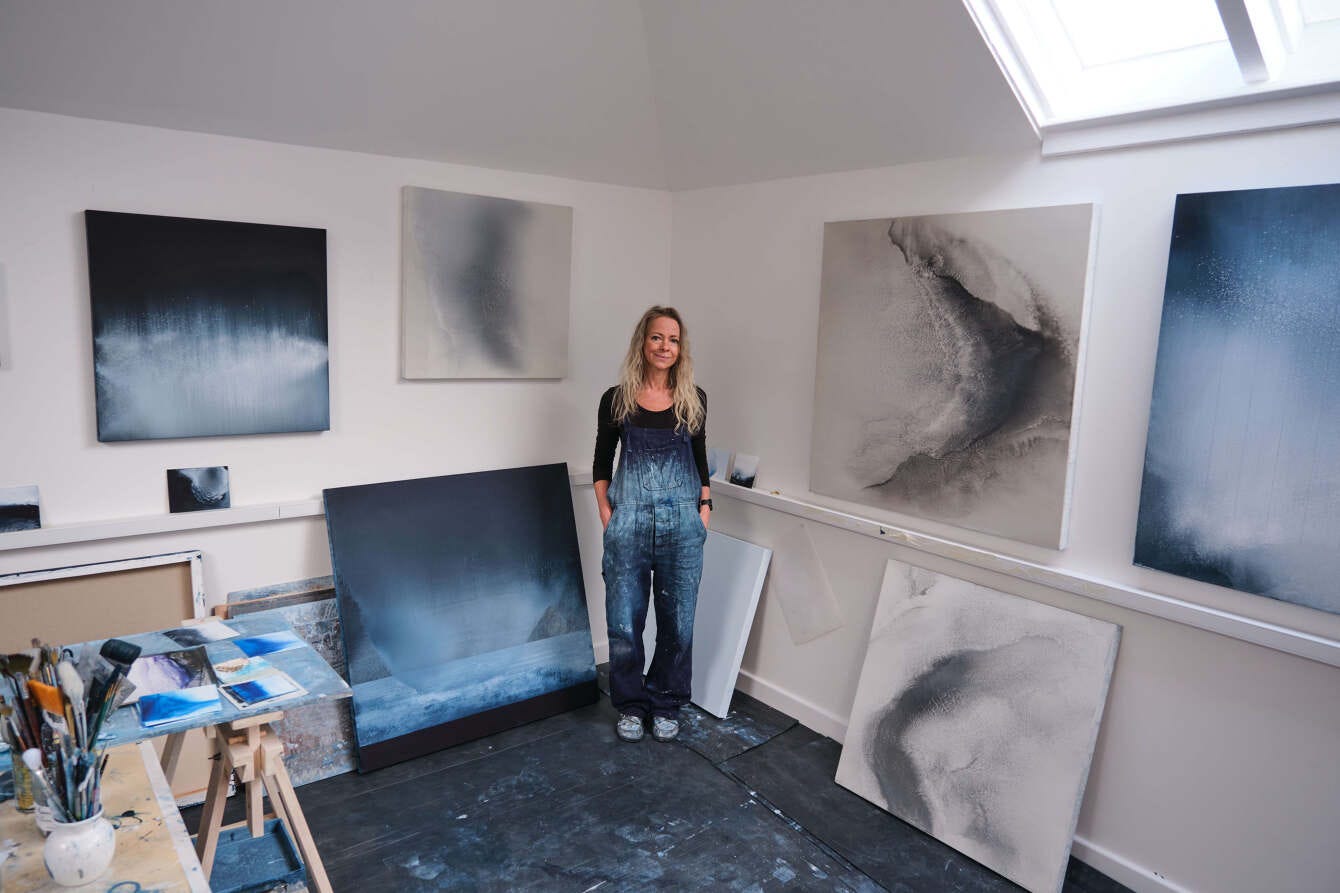
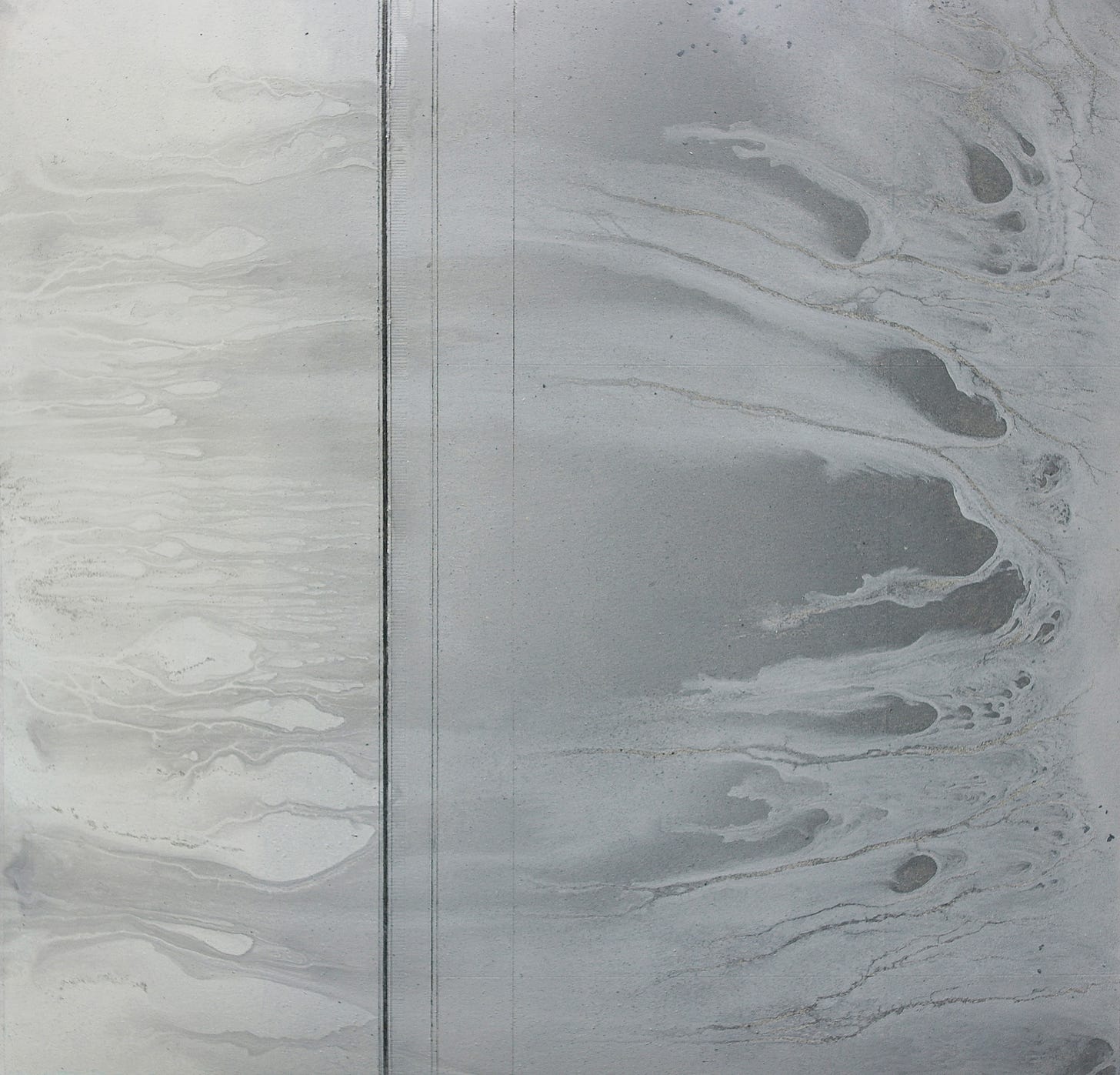

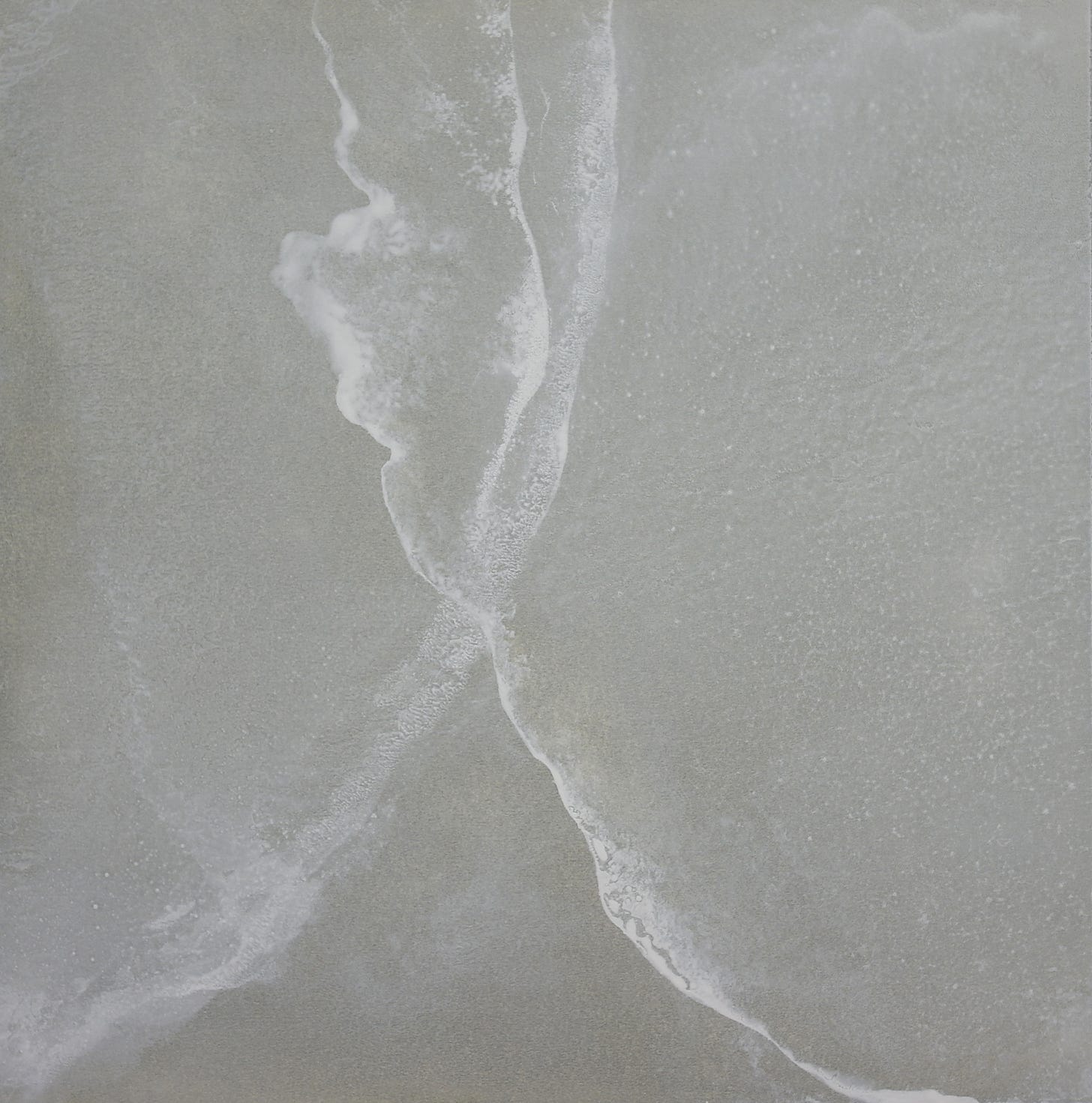
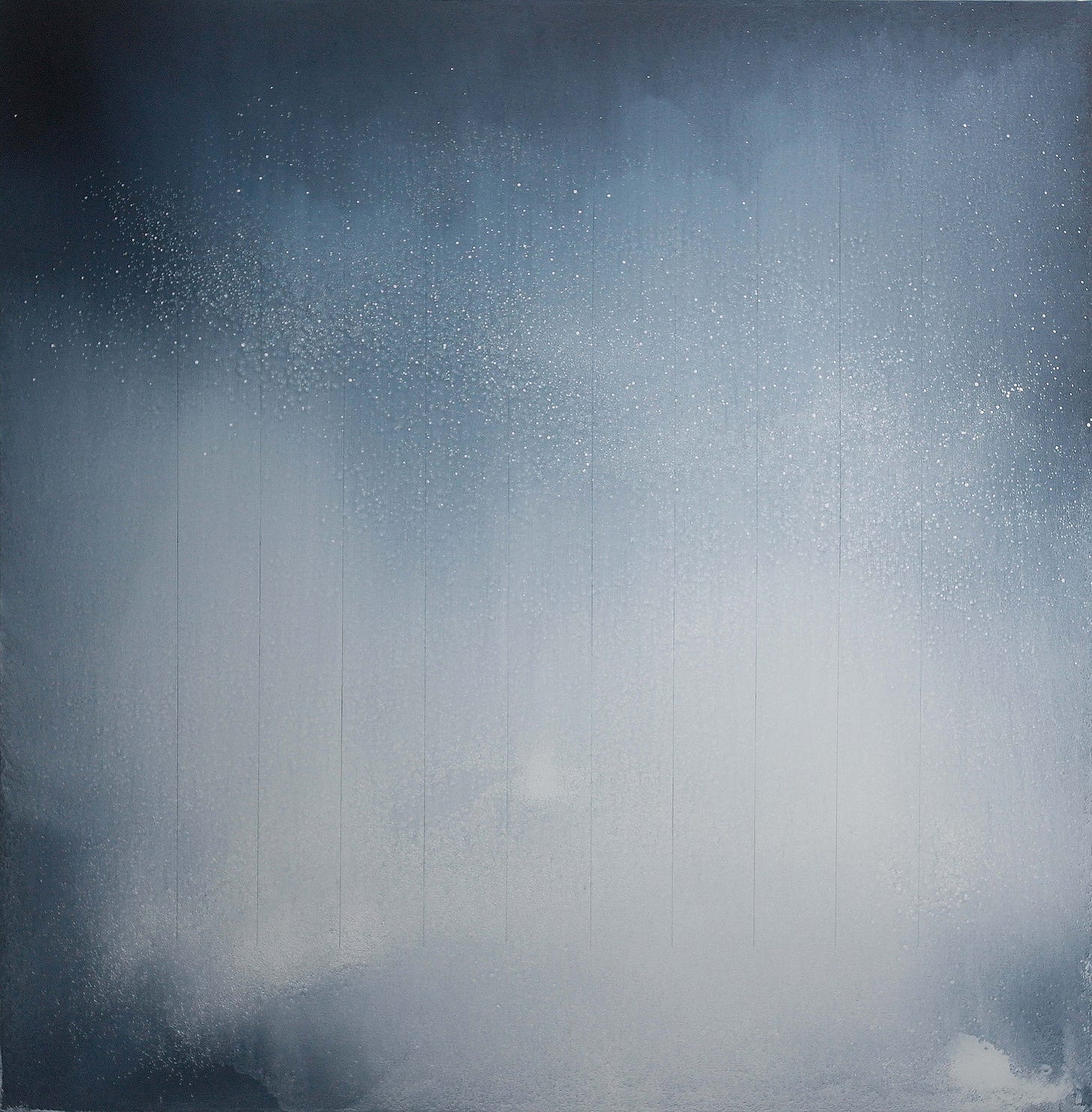
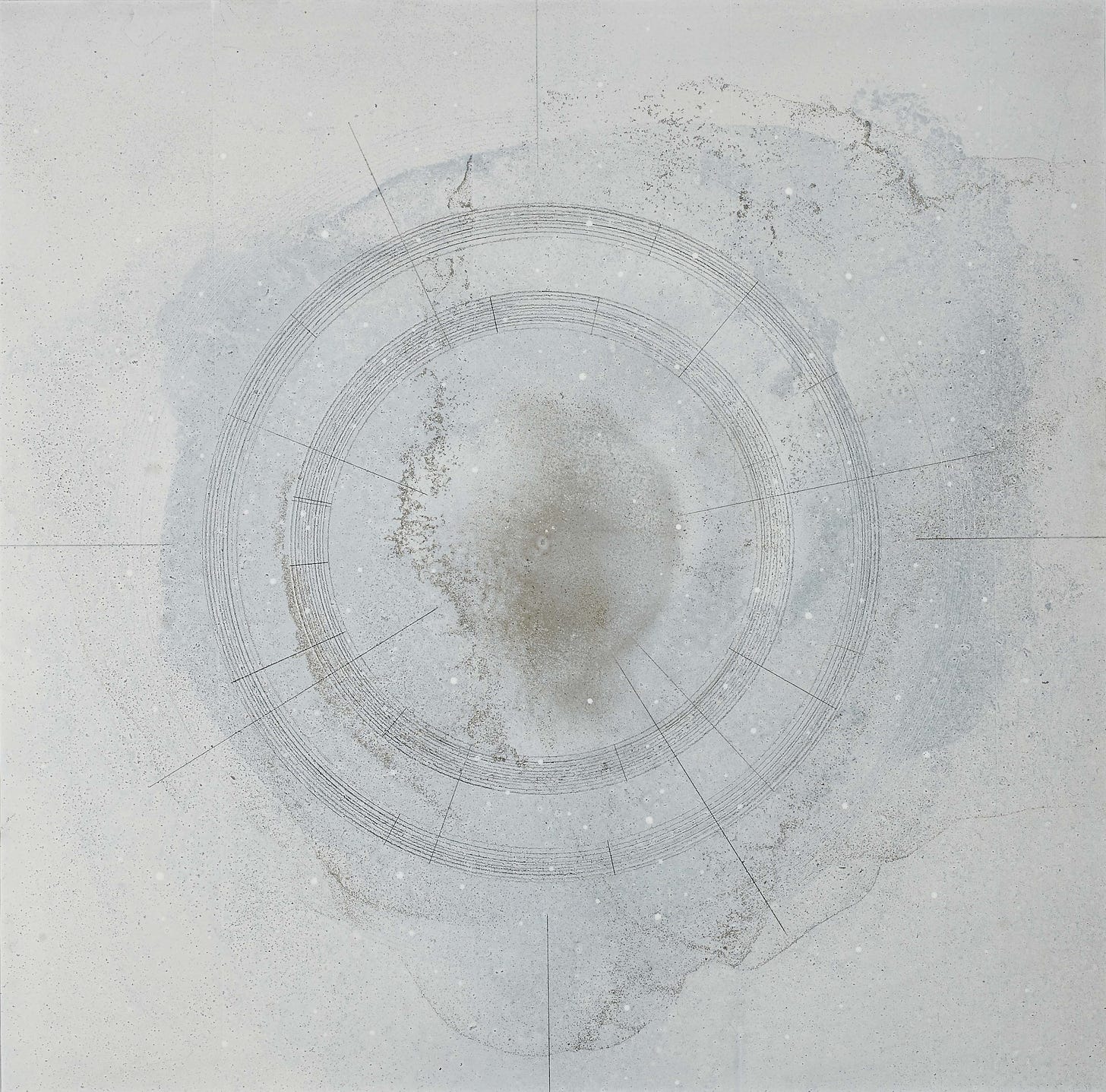
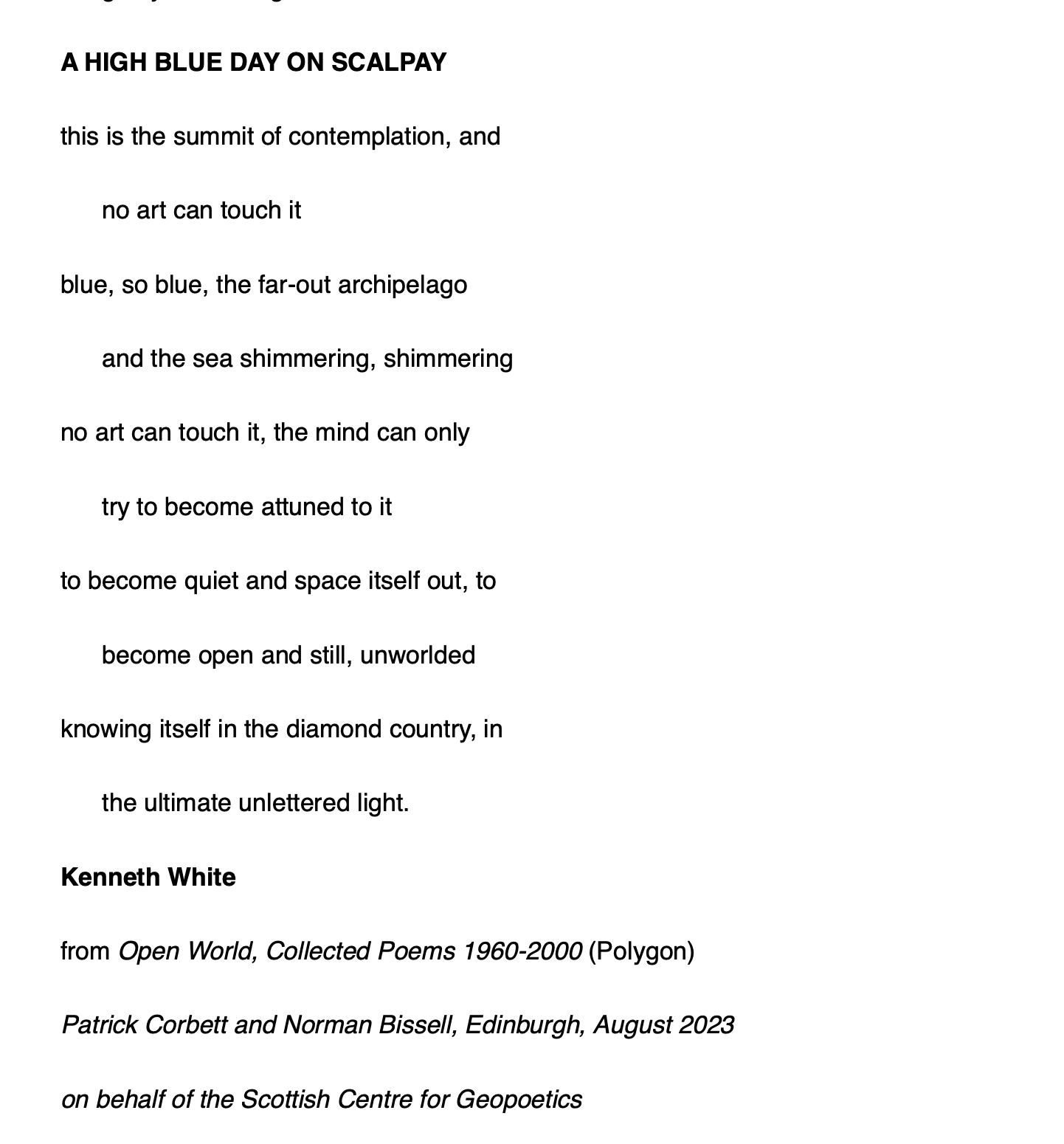
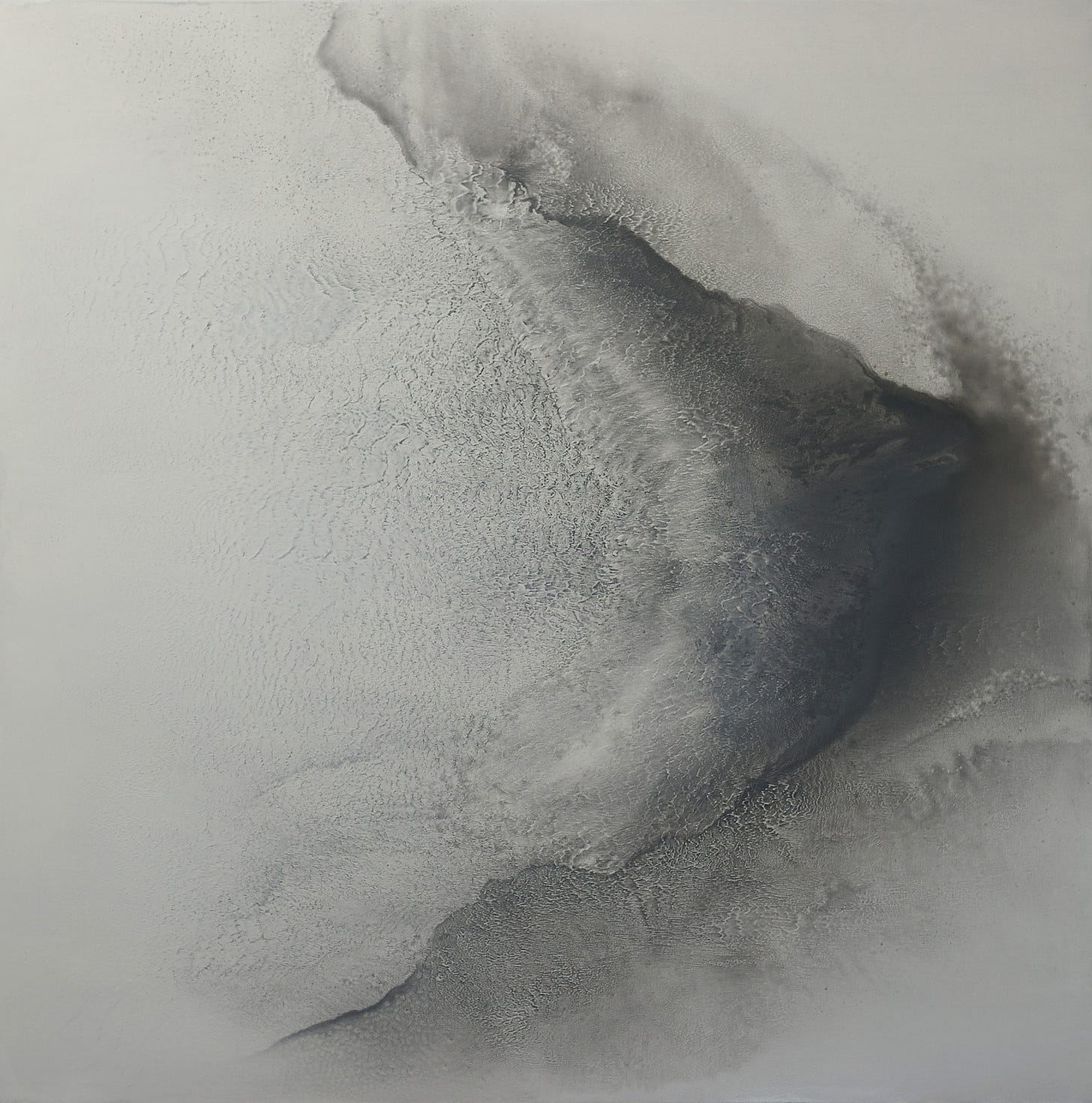
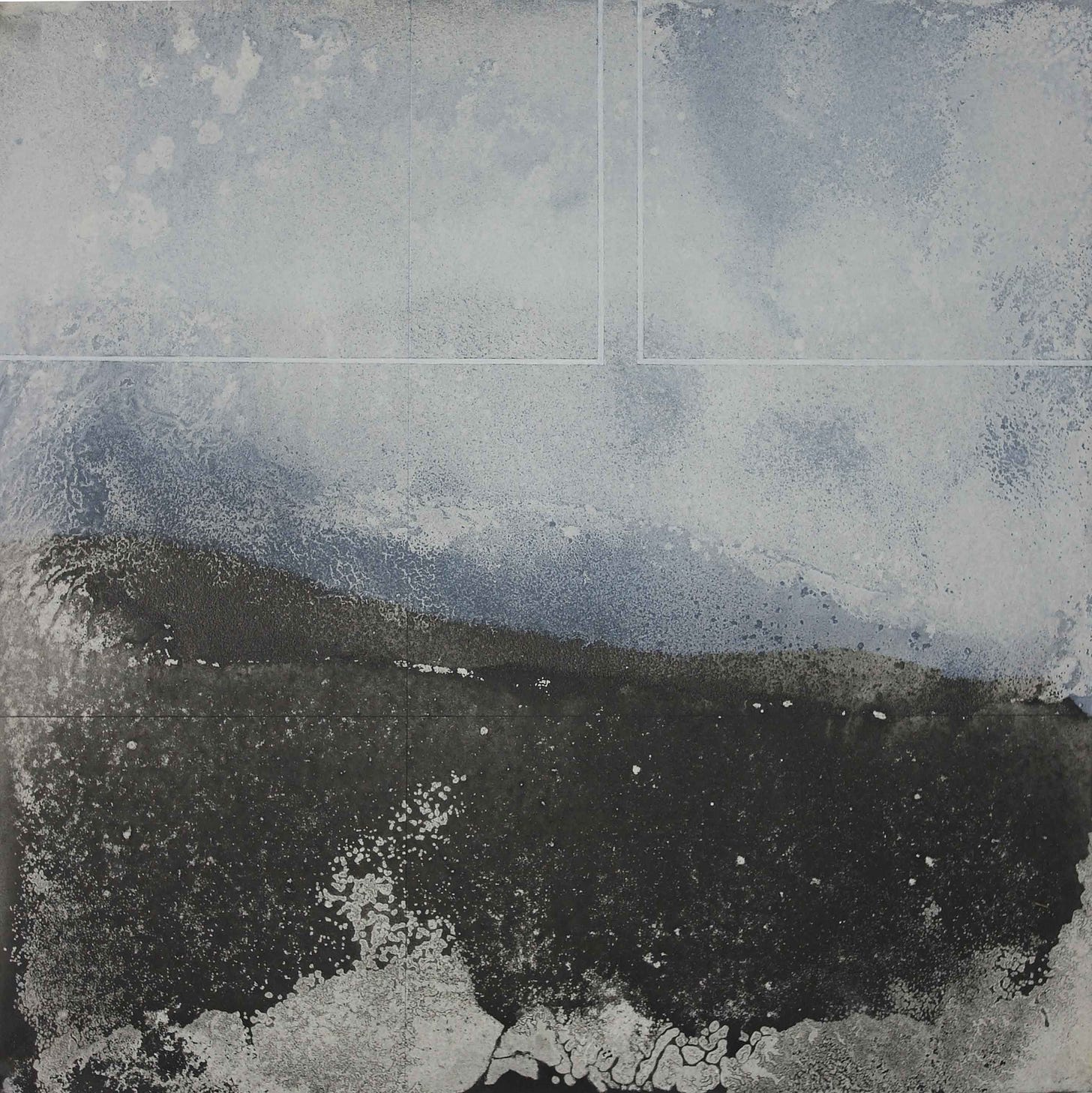



Kenneth White! That poem! The shimmering light!
Geopoetics. paintings that sing of wind and place..
Restacking this fine piece to Notes.
Thanks so much. Will be rereading, in a larger screen so as to see the images better — so much to think about here, especially (for me, in any case) on place and displacement and working one’s way through that with the rigor of art. Really wonderful.